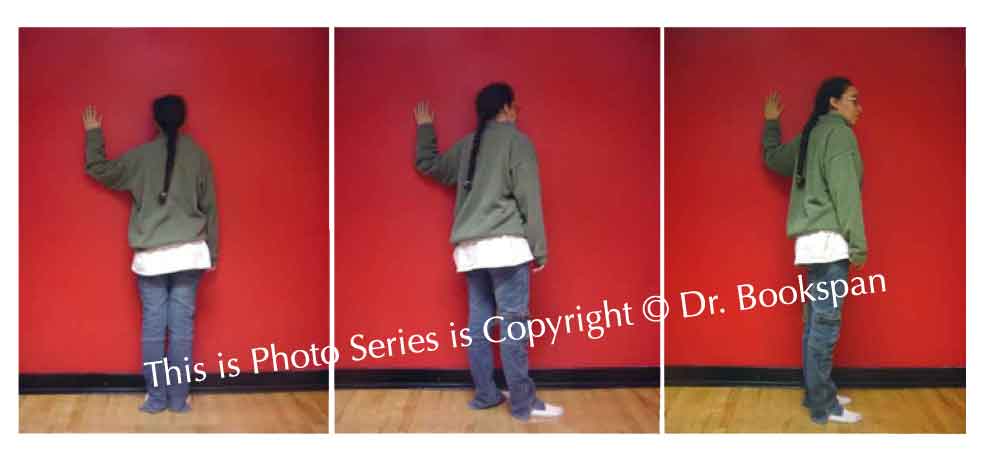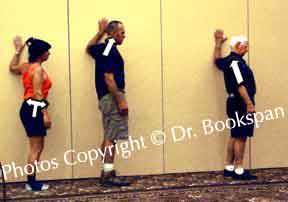这两个影片,有很好的用电脑时的姿势示范。
另外还在这网站,找到了好用的身体良好姿势的资讯。自己有些驼背的的问题,虽然跑步后进步了很多,但还是有头前倾的问题。做了网站上的两个伸展运动,感觉问题有了改善,只要紧记着对的姿势,相信可以改善我的姿势问题。
Full article or more info can be found : http://www.drbookspan.com
Two Retraining Stretches
Tight pectoral (chest and front of shoulder) muscles rotate your arms inward. To see if you do this, put your arms at your sides, look in the mirror and note direction of your thumbs. Do they face inward – toward each other? To restore this muscle group to functional resting length do these two stretches, then *use* the new straight positioning for all you do. It is not the stretches that fix the problem, but the purpose of the stretches - to allow you to hold healthy position the rest of the day:1. Chest Stretch (also called Pectoral or "Pec" Stretch, even though it includes other muscles and structures in front / chest)
- Face a wall, left-hand photo below. Lift one hand up, elbow bent out to the side. Shoulder down and relaxed.
- Hold properly just a few seconds, then switch arms.
- Keep good positioning - avoid the three mistakes pictured next.
- Avoid hyperlordosis by flexed hip (left), forward head (center), and hyperlordosis by thoracic lean (right). Thank you to participants of the Snowmass 2004 Wilderness Medical Society Stretch Workshop for demonstrating in the photo above.
Drop your arms and look at your thumbs again. Thumbs should face forward now.
Try the Wall Test again. It should be easy to stand straight now. If not, see if you have done this stretch correctly.

- Put one hand behind you, as if in an opposite pocket, photo at right.
- Breathe in. While breathing out, slide your other hand down the side of your body toward your knee, photo at right.
- Tilt your head downward to that same side, gently. Keep it as much against the wall as you comfortably can.
- Don't round or hunch forward, or drop or raise your chin.
- Feel a nice stretch along your entire side.
- Hold a second or two while breathing. Switch sides.
- If your lower back hurts or pinches to do this trapezius stretch, you may be increasing the arch in your lower back. If you don't know how to tuck your hip to reduce overarch, see the free article on hyperlordosis to fix this.
extract from http://www.drbookspan.com/NeckPainArticle.html



没有评论:
发表评论